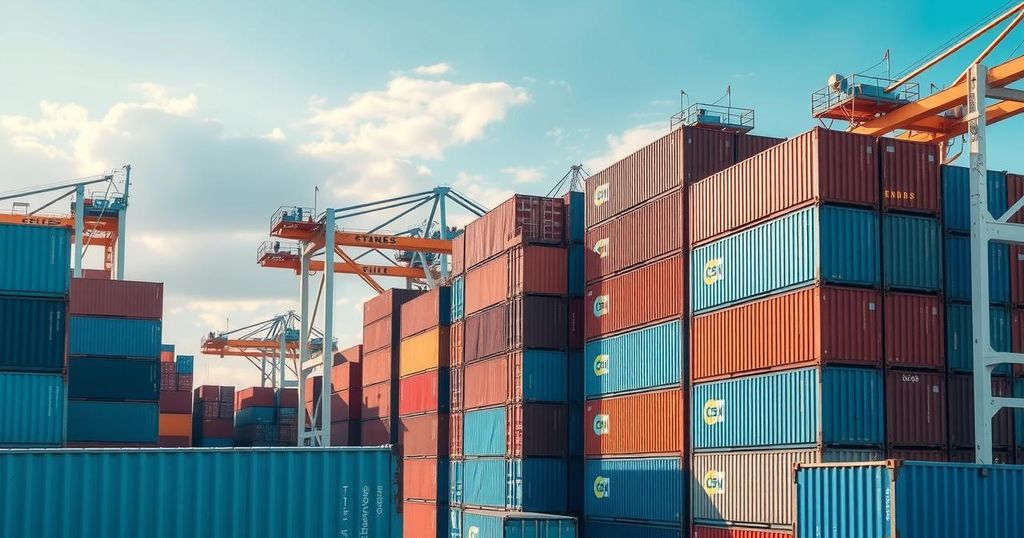U.S. imports surged to a record high of $293.1 billion in December, spurred by businesses preparing for tariffs from President Trump. This spike in imports has led to a significant widening of the trade deficit, with China indicated as the largest contributor. Trump’s tariff measures reflect a complex interplay of strategies to influence domestic manufacturing and manage international trade relations.
In December, U.S. imports reached an all-time high of $293.1 billion, a 4% increase from November, as businesses rushed to acquire foreign goods in anticipation of tariffs proposed by President Donald Trump. This surge contributed significantly to the largest trade deficit seen in nearly two years, highlighting the growing gap between what the U.S. exports and imports. Trump’s tariff plans, particularly a 10% tariff on Chinese imports and a temporary suspension of a 25% tariff on goods from Canada and Mexico, have generated considerable uncertainty in international trade.
President Trump’s tariffs aim to incentivize domestic production, motivated by concerns regarding the trade deficit. However, such actions have led to widespread anxiety, prompting businesses to postpone investments or transfer additional costs to consumers. Additionally, tensions have escalated internationally, with retaliatory measures from China, including tariffs on U.S. products and an investigation into Google, raising further concerns about the potential implications for the U.S. economy.
In December, China recorded the highest trade deficit with the U.S., shipping $25.3 billion more than it imported, while the European Union followed as a significant target of Trump’s tariff threats. Conversely, the U.S. maintained a minor surplus of $2.3 billion in goods trade with the United Kingdom. The overall trade deficit, which includes services, rose by 17% to $918.4 billion over the past year, signaling the need for strategic economic adjustments moving forward.
The article provides insight into the implications of President Trump’s tariff policies on U.S. trade. Following his announcement of new tariffs, businesses reacted swiftly by increasing imports to mitigate the financial impact of potential price hikes. The combination of heightened imports and tariffs has resulted in a widening trade deficit, with China and the European Union being significant players in this economic landscape. This situation sets the stage for ongoing uncertainties in global trade and economic relations.
In summary, the imposition of tariffs by President Trump has manifested in unprecedented levels of U.S. imports and significant trade deficits, particularly with China. The resultant economic situation raises essential questions regarding the effectiveness of tariffs in boosting domestic production and the broader consequences for international relations and economic stability. As businesses brace for the impact of these policies, the future of U.S. trade hangs in a precarious balance.
Original Source: www.bbc.com






